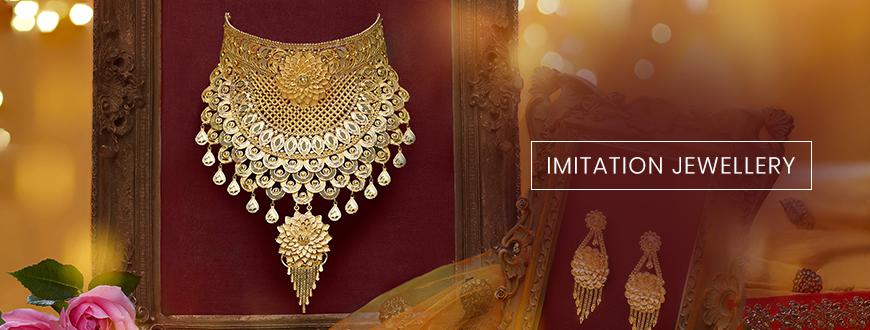Kalyan Wiki

Imitation Jewellery
Imitation jewellery refers to adornments that are created using a wide range of artificial materials. It's called fashion jewellery, and it allows people to experiment easy and wearable designs in many styles and trends in the most affordable way. Imitation jewellery is made using a variety of materials that can easily be moulded into different shapes. Traditionally, the most common metal used to make fashion jewellery is a silvery-white lustrous metal called nickel. Lead, copper, cadmium and brass also used for the making.
Metals used for making Imitation jewellery:
Nickel: Nickel is a strong, lustrous chemical element with the symbol Ni; it is a durable and easily moldable substance, and hence is used as a standard metal for making imitation ornaments. Nickel is mixed with other metals like copper and aluminium to create an alloy with which fashion jewellery is made. It is also used for making medical equipment, eyeglass frames, filters, buttons, zippers and many other items that we use in daily life.
Copper: Copper is a versatile chemical element with the symbol Cu with very high thermal and electrical conductivity. Copper exists naturally in the environment and spreads through the atmosphere. Its yellowish colour increases its demand in the industry and forms an alloy or mixed with gold to create jewellery. Copper usually applies in industries and agriculture.
Brass: Its bright gold-like appearance makes it a widely used material to cast. By varying the copper and zinc ratios, the characteristics of brass can be changed, allowing hard and soft brasses. Brass is widely used in plumbing, electrical applications and extensively in creating brass musical instruments.
Lead: Lead is a chemical element with the symbol Pb. It is an abundant metal that is denser than other materials. Lead has a low melting point, and it is also malleable... Lead is still widely used for batteries, pigments, ammunition, cable sheathing, etc.







